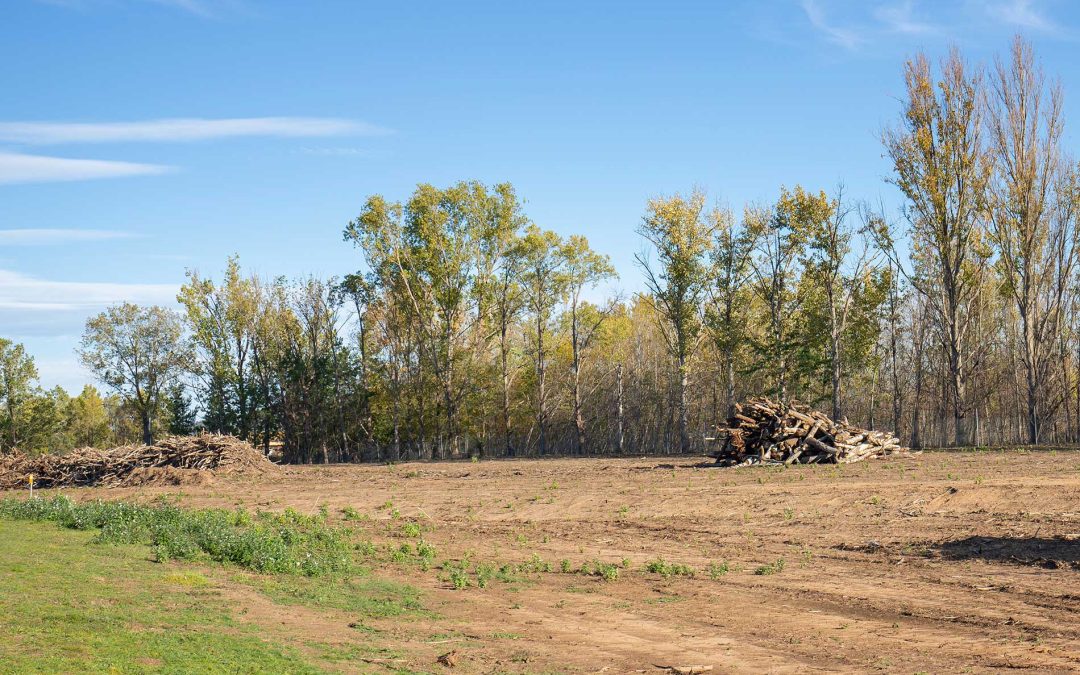Introduction
Land management is a fundamental aspect of agricultural, construction, and environmental planning. One of the most significant components of land management is the process known as land clearing. Often seen as a preliminary step before development or cultivation, this practice has evolved through time, with improved methods, machinery, and a deeper understanding of ecological impact. Whether it’s for farming, residential development, or ecological restoration, land clearing plays a crucial role in shaping how landscapes are used and preserved.
In this article, we’ll explore what land clearing entails, the methods used, the reasons behind it, the benefits it provides, and the potential environmental implications. The objective is to offer a comprehensive overview of this practice, encouraging responsible and sustainable approaches.
What Is Land Clearing?
Land clearing refers to the process of removing trees, shrubs, stumps, stones, and other obstacles from an area of land. This is typically done to prepare the land for agriculture, construction, or landscaping. The practice involves a variety of activities including cutting down vegetation, burning, bulldozing, and chemical treatments depending on the specific needs of the project.
While it might sound like a straightforward task, land clearing is a complex process that requires careful planning, proper execution, and sometimes, regulatory approval. The size of the land, the type of vegetation, soil quality, and intended land use all determine how the clearing should be approached.
Why Land Clearing Is Necessary
There are several reasons why land clearing is necessary in both urban and rural development:
1. Agricultural Development
Farmers often need to clear land to cultivate crops or create grazing fields for livestock. By removing trees and underbrush, land becomes more usable and manageable for agricultural production. This also improves access to sunlight and water for crops.
2. Construction Projects
Before any structure is built—whether it’s residential, commercial, or industrial—land must be cleared to provide a solid foundation. This process ensures safety, accessibility, and functionality for future developments.
3. Fire Prevention
Overgrown areas can become fire hazards, especially in dry climates. Removing excessive vegetation reduces the risk of wildfires, which can destroy homes, ecosystems, and infrastructure.
4. Aesthetic and Recreational Use
Landowners may clear land for aesthetic improvements or to create recreational spaces such as parks, trails, and gardens. Proper land clearing can improve visual appeal and property value.
5. Environmental Restoration
In some cases, land clearing is used to restore ecosystems by removing invasive species or degraded vegetation. This allows native plants and animals to thrive and supports biodiversity.
Methods of Land Clearing
There are multiple methods for clearing land, each suited for different types of terrain, vegetation, and project goals. Choosing the right method is essential to balance effectiveness and environmental responsibility.
1. Manual Clearing
This is the most labor-intensive method, involving hand tools like machetes, chainsaws, and axes. It’s best for small plots or areas with limited vegetation. Manual clearing is time-consuming but offers precision, especially around sensitive areas that require minimal disturbance.
2. Mechanical Clearing
For large-scale projects, heavy machinery such as bulldozers, excavators, and mulchers are used to remove trees and brush quickly. Mechanical clearing is efficient and often the preferred choice for construction and agricultural operations.
3. Chemical Clearing
This method uses herbicides to kill unwanted vegetation. It’s commonly used for managing weed growth or preventing regrowth after mechanical clearing. However, chemical use must be managed carefully to avoid soil and water contamination.
4. Controlled Burning
In certain cases, fire is used to clear land, especially in areas with thick vegetation. This method is effective but risky and must be conducted under strict regulations. It can also benefit soil fertility by returning nutrients through ash.
Tools and Equipment Involved
The tools required for land clearing vary based on the size of the land and the method chosen. Common equipment includes:
- Chainsaws: For cutting down trees and thick brush.
- Bulldozers: For pushing over trees and removing stumps.
- Excavators: Used for digging out root systems and leveling land.
- Brush Mowers: For shredding smaller vegetation.
- Skid Steers and Tractors: Versatile machines for various land tasks.
Modern technology also allows for the use of GPS and drones in planning and monitoring the land clearing process, ensuring precision and reducing the risk of error.
Environmental Considerations
While land clearing offers many benefits, it also raises significant environmental concerns. If not managed properly, it can lead to:
1. Deforestation and Habitat Loss
Clearing forests for agriculture or construction can destroy natural habitats and threaten wildlife populations. It disrupts food chains, breeding grounds, and migration patterns.
2. Soil Erosion
Removing vegetation exposes the soil to wind and rain, leading to erosion. Without roots to hold the soil in place, topsoil can wash away, reducing land fertility and increasing sediment in nearby water bodies.
3. Water Cycle Disruption
Trees and vegetation play a key role in maintaining the local water cycle through transpiration. Large-scale clearing can alter rainfall patterns and reduce groundwater recharge.
4. Carbon Emissions
Trees absorb carbon dioxide, and their removal contributes to greenhouse gas emissions. This accelerates climate change and reduces the earth’s natural carbon sinks.
5. Invasive Species
Disturbed land can become a breeding ground for invasive plant species that outcompete native vegetation, further degrading the ecosystem.
Regulatory and Legal Framework
Land clearing is often subject to regulation, especially in areas with environmental protections or cultural heritage sites. Permits may be required, and assessments might be needed to evaluate the impact on wildlife, water resources, and soil.
Landowners must familiarize themselves with applicable laws and engage environmental consultants when necessary. Illegal clearing can result in heavy fines, restoration orders, and long-term project delays.
Best Practices for Sustainable Land Clearing
To mitigate the adverse effects of land clearing, sustainable practices should be adopted:
- Minimize Clearing Area: Only clear what is necessary for the intended use.
- Preserve Topsoil: Save topsoil for reuse in landscaping or farming.
- Use Selective Clearing: Retain mature trees and native vegetation when possible.
- Create Buffer Zones: Leave vegetation near waterways to reduce erosion and protect aquatic habitats.
- Plan for Replanting: Incorporate reforestation or landscaping plans post-clearing.
- Monitor and Maintain: Regularly inspect the cleared land to manage regrowth and prevent erosion.
Economic Implications
Land clearing has a direct economic impact on development and agriculture. Properly cleared land increases productivity, boosts land value, and enables infrastructure growth. However, ignoring environmental costs can result in long-term economic damage through land degradation, disaster recovery, and loss of ecosystem services.
Investing in sustainable methods may involve higher initial costs, but it saves money over time through reduced remediation needs and better long-term viability.
Conclusion
Land clearing in Dripping Springs is more than just removing trees or brush—it’s a transformative process that lays the groundwork for agriculture, development, and ecological change. As with any powerful tool, it must be used wisely and responsibly. Balancing progress with preservation is the key to ensuring that land remains productive, habitable, and ecologically sound.
The challenge lies in integrating technology, legal frameworks, and environmental consciousness to optimize outcomes. Whether for farming, building, or conservation, thoughtful land clearing practices can benefit both people and the planet.
The decision to undertake land clearing should always be accompanied by a thorough understanding of its implications and a commitment to responsible land stewardship. Sustainable approaches will not only meet today’s needs but also preserve opportunities for future generations.





























